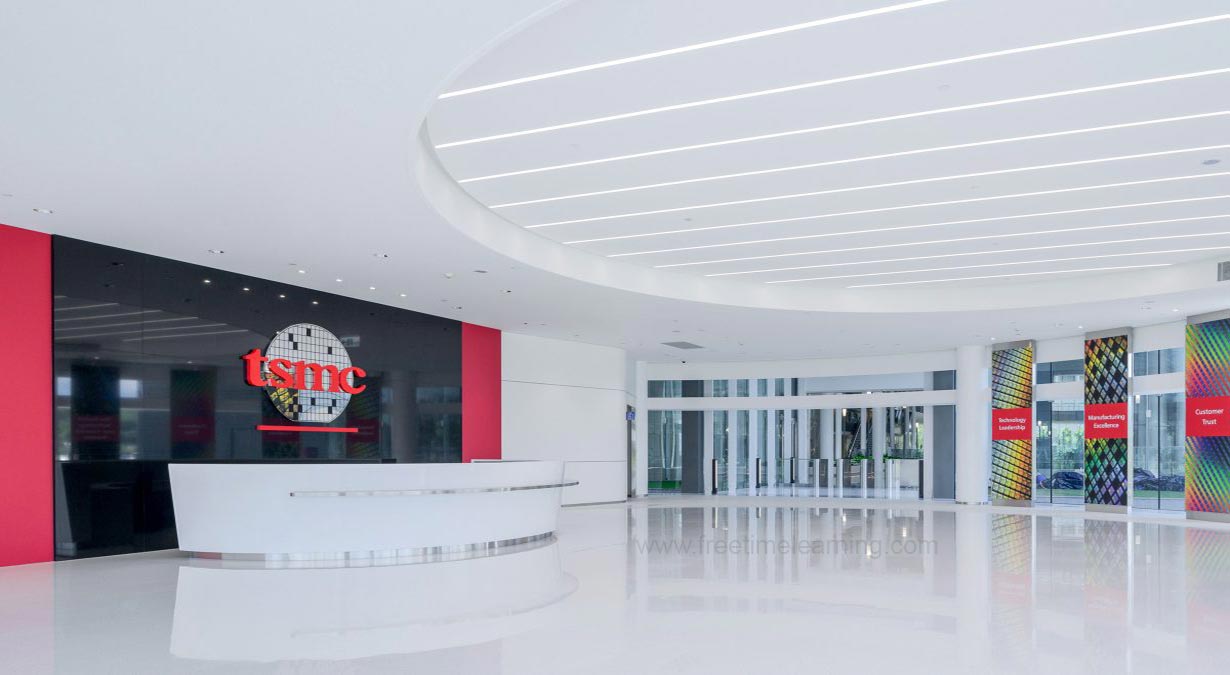
Full Name: Taiwan Semiconductor Manufacturing Company Limited
Founded: 1987
Founder: Morris Chang
Headquarters: Hsinchu Science Park, Hsinchu, Taiwan
CEO (as of 2024): C. C. Wei
Ticker Symbol: TSM (listed on the NYSE and TWSE)
TSMC is a pure-play foundry, meaning it manufactures semiconductors exclusively for other companies and does not design its own chips. This business model has enabled it to work with many major clients.
Apple
AMD
NVIDIA
Qualcomm
MediaTek
Broadcom
Intel (increasingly relying on TSMC for advanced nodes)
TSMC is the first to mass-produce chips at advanced nodes such as:
7nm (2018)
5nm (2020)
3nm (2022–2023)
2nm is under development (expected around 2025)
Specializes in FinFET and now moving into GAA (Gate-All-Around) transistor technology.
Main fabs in Taiwan
New fabs in:
Arizona, USA (TSMC Arizona, focused on 5nm/4nm and 3nm in future)
Japan (joint venture with Sony for mature nodes like 22/28nm)
Germany (planned)
TSMC is critical to the global tech supply chain, producing chips for everything from iPhones to AI servers.
It accounts for over 50% of the global foundry market.
It plays a major role in geopolitics due to its location in Taiwan and the strategic importance of its technology.
Increasing investment in AI chips due to demand from NVIDIA and others.
Facing challenges in global expansion due to workforce training and local infrastructure.
Working on 2nm node with nanosheet (GAA) transistors.
The TSMC recruitment process is structured to evaluate both technical depth and cultural fit, especially for roles in engineering, R&D, and manufacturing. Here's a breakdown of the typical process:
Submit via:
TSMC career portal
LinkedIn or job fairs (especially in Taiwan and universities globally)
Campus recruitment for fresh graduates (very active in Taiwan, US, and top Asian universities)
Reviewed by HR and the technical hiring team
Strong emphasis on:
Semiconductor or electronics background
Academic performance (GPA matters, especially in Taiwan)
Internships, research, or experience with VLSI, CMOS, fab, etc.
This may include:
Aptitude tests (math, logic, reasoning)
Technical MCQs related to:
Digital & Analog electronics
Semiconductor Physics
CMOS, VLSI Design
Process Integration, Device Physics
Coding test (for software-related roles only)
Process Engineer / R&D Engineer:
Semiconductor fabrication (etching, lithography, deposition)
Device Physics (MOSFET characteristics, scaling)
Process integration knowledge
Design Engineer / DFT / Verification:
Software/EDA Engineer:
Data structures, algorithms
System design, scripting
EDA tools (e.g., Synopsys, Cadence)
Interviewers focus on problem-solving skills and depth of understanding, not just surface-level knowledge.
Behavioral and fit assessment
Questions may include:
Why TSMC?
How do you handle stress in a high-pressure environment?
Are you open to working in shift-based roles or relocating?
Offers include:
Competitive salary (especially in Taiwan and US)
Relocation support
Benefits like health insurance, housing allowance (in Taiwan)